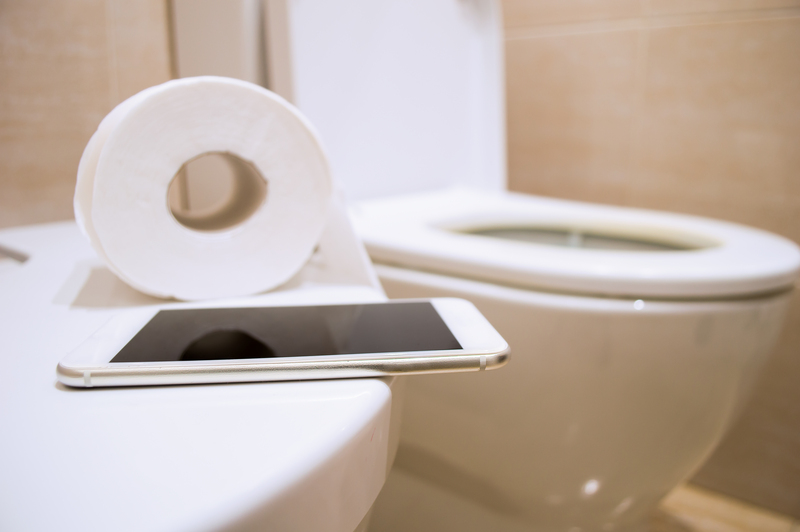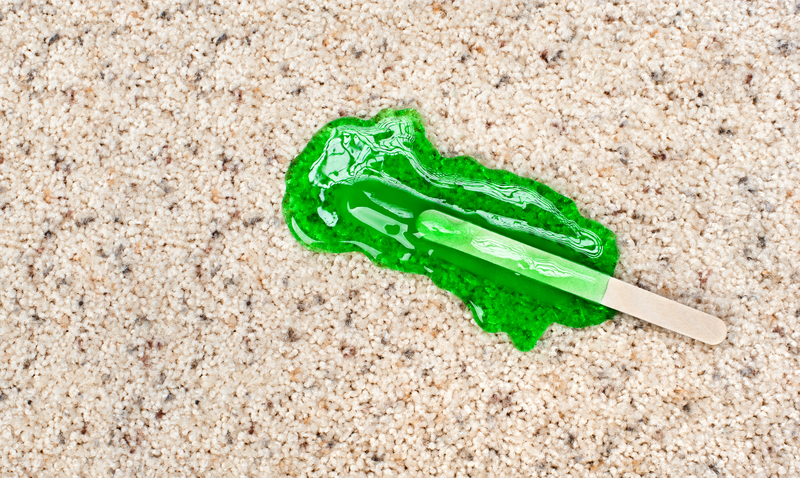Navigating the Challenges of a Damp-Smelling Environment
Posted on 27/08/2025
Understanding the Damp-Smelling Environment
A damp-smelling environment is more than just an inconvenience; it can indicate underlying issues with moisture, mold growth, and even structural damage in your home or workplace. This article comprehensively explores the causes, impact, and concrete solutions to help you navigate the challenges of a musty, damp-smelling environment, creating a fresher, healthier space for everyone.

What Causes a Damp-Smelling Environment?
Before tackling the issue, it's crucial to identify the potential sources of a damp, musty smell. Several factors commonly contribute to unpleasant odors caused by moisture:
- Water leaks: Leaking pipes, roofs, or windows allow unwanted moisture to enter.
- Poor ventilation: Lack of airflow traps humidity, encouraging mold and mildew.
- Condensation: Caused by temperature differences, especially near windows and poorly insulated walls.
- Flooding or spills: Non-dried wet areas foster microbial growth.
- High humidity: Ambient moisture in tropical or poorly ventilated climates.
Identifying the primary contributors within your musty-smelling space is your first step toward an effective solution.
The Health Risks of Damp, Musty Environments
A damp-smelling home is not simply unpleasant--persistent exposure can impact your health, especially in vulnerable individuals such as children, the elderly, and those with allergies or respiratory issues.
Potential health hazards include:
- Mold allergies: Mold spores can trigger sneezing, itchy eyes, and skin irritation.
- Worsened asthma: Dampness and mildew aggravate respiratory conditions.
- Sinus congestion: Persistent exposure irritates nasal passages.
- General malaise: Chronic exposure can lead to headaches, fatigue, and poor concentration.
*Regular exposure to a damp, musty environment should not be underestimated. Taking active measures can protect your well-being and the integrity of your property.*
Identifying the Source of Damp Odors
Common Problem Areas
- Basements and cellars
- Bathrooms and kitchens
- Attics
- Laundry rooms
- Storage areas with cardboard or fabric
- Closets or areas behind heavy furniture
Pinpointing the exact origin of the damp, stale odor is key for effective remediation. Thoroughly inspect areas prone to moisture and look for visible signs of mold growth, water stains, or peeling paint. Pay attention to lingering smells which are often most pronounced in the morning or after rain.
Professional Assessment
If the source is not immediately apparent, you may need assistance from a qualified home inspector or mold remediation professional. They can utilize moisture meters and thermal imaging to find hidden leaks or condensation within walls and floors, ensuring a comprehensive approach to eliminating persistent dampness and musty odors.
Effective Strategies for Navigating and Eliminating Damp Odors
1. Improve Ventilation
- Open windows and doors regularly to let fresh air circulate.
- Install or use exhaust fans in bathrooms and kitchens.
- Consider whole-house ventilation systems for persistent issues.
- Utilize ceiling or oscillating fans in enclosed spaces.
Improving airflow helps disperse moisture and dilutes stagnant, musty-smelling air.
2. Control Humidity Levels
- Keep indoor humidity between 30% and 50%; use a hygrometer to monitor levels.
- Run a dehumidifier in damp-prone areas, especially basements and laundry rooms.
- Use moisture absorbers, like silica gel or charcoal, in closets or wardrobes.
- Air conditioning can also help regulate humidity during warmer months.
Maintaining optimal humidity inhibits mold and mildew growth, making it harder for damp odors to develop.
3. Locate and Repair Leaks
- Inspect pipes, roofs, and window frames for any signs of leaking.
- Check behind appliances (washing machines, dishwashers) and under sinks.
- Patch roof or wall leaks promptly and replace damaged insulation.
- Seal cracks around foundations or windows to prevent water intrusion.
Swiftly addressing leaks is critical in tackling the root cause of a damp environment and associated smells.
4. Clean and Remove Mold and Mildew
- Use a mixture of water and white vinegar or hydrogen peroxide to clean non-porous surfaces.
- For porous materials (carpet, ceiling tiles), replacement may be necessary if mold is extensive.
- Always wear gloves, masks, and eye protection when cleaning mold to avoid exposure.
- Dispose of contaminated items in sealed plastic bags to prevent re-contamination.
For significant infestations, professional mold removal services are recommended for safety and effectiveness.
5. Replace or Deep Clean Soft Furnishings
- Wash curtains, rugs, and removable upholstery regularly.
- Use enzymatic cleaners on carpets to neutralize odors at the molecular level.
- Replace water-damaged mattress, cushions, and other absorbent materials if odors persist.
Soft furnishings can absorb and retain odors long after the original damp problem has been addressed.
6. Use Odor Absorbers and Air Purifiers
- Set out bowls of baking soda, activated charcoal, or cat litter to absorb odors naturally.
- HEPA air purifiers can help trap airborne spores and particulates, improving air quality.
- Essential oil diffusers with antibacterial oils (like tea tree or eucalyptus) can mask and neutralize odors.
While odor absorbers and purifiers provide short-term relief, pairing them with moisture control delivers long-term results.
Prevention Tips for a Damp-Smelling Space
Preventing the recurrence of musty and damp odors takes ongoing effort. Here are practical tips to keep your home fresh, dry, and odor-free:
- Ensure gutters and downspouts are clean and direct water away from foundations.
- Leave closet and cabinet doors ajar periodically for air circulation.
- Store items in plastic containers rather than cardboard, particularly in basements or attics.
- Promptly dry wet spills on floors or carpets.
- Avoid overwatering indoor plants, as excess water can add to humidity.
- Install waterproofing membranes on vulnerable floors or walls.
- Regularly inspect and repair all sealants and caulking in bathrooms, kitchens, and around windows.
Eco-Friendly Solutions for Damp Odor Removal
In recent years, homeowners and facility managers alike have explored natural and eco-friendly methods for handling damp-smelling environments. Here are a few effective strategies:
- Vinegar spray: A natural disinfectant, vinegar neutralizes odors and inhibits mold.
- Baking soda: Sprinkle on carpets or place in bowls for effective odor absorption.
- Activated charcoal: Absorbs pollutants and moisture from the air.
- Lemon or citrus peels: Provide a fresh scent and mild antibacterial action.
- DIY potpourri: Combining dried herbs and essential oils can help mask lingering odors.
When using any natural remedy, routinely check the area for moisture and reapply as needed to prevent odors from returning.
When to Call in the Professionals
While many cases of damp-smelling homes can be managed with DIY methods, there are circumstances where professional help is advisable:
- The moisture source is hidden or affects structural components.
- Mold growth covers an area larger than 10 square feet.
- People in the home are experiencing persistent health issues.
- Previous cleaning methods have failed to remove odors or visible stains.
A professional remediation team has the expertise and equipment to safely and effectively resolve serious moisture and odor issues, ensuring your home remains safe and comfortable.

Long-Term Strategies to Maintain a Fresh Living Environment
Developing habits and routines for maintaining a dry, odor-free space forms the backbone of preventing any recurrence of a damp-smelling environment:
- Establish a routine for cleaning and inspecting humid areas.
- Invest in continuous dehumidification during rainy or humid seasons.
- Consider waterproof paints and additives for basement and bathroom walls.
- Regularly review attic and crawl space ventilation.
- Stay alert for signs of new leaks or water stains.
- Educate all household members on the early warning signs of damp and mold.
By staying proactive, you can prevent even minor moisture issues from turning into larger problems that contribute to a smelly, unhealthy home.
Frequently Asked Questions: Damp-Smelling Environments
Is a damp odor always caused by mold?
Not always. While mold and mildew are common sources, a musty, damp odor can also result from stagnant air, wet materials, or hidden water leaks. That's why thorough inspection is essential.
Can a dehumidifier alone solve damp smells?
A dehumidifier is an excellent tool for reducing moisture, but if the root cause (like a leak or mold growth) isn't addressed, odors may return. Always combine dehumidification with other remediation measures.
Are damp odors in old houses inevitable?
While older buildings may be more prone to moisture problems due to outdated materials, regular maintenance and modern solutions can minimize or eliminate persistent musty odors.
Do air fresheners help with a musty-smelling room?
Air fresheners temporarily mask odors but don't solve the core issue. Focus on removing the source--moisture, leaks, or mold--for lasting results.
Is it safe to sleep in a room with a persistent damp odor?
Occasional exposure is unlikely to cause serious harm, but prolonged exposure to damp, moldy environments may impact health, especially for sensitive individuals. Address the source quickly to ensure safety.
Conclusion: Your Path to a Healthier, Fresher Environment
Tackling the challenges of a damp-smelling environment requires both immediate action and ongoing vigilance. By identifying the causes, implementing smart solutions, and committing to preventive maintenance, you can enjoy a fresher, healthier living or working space year-round. Don't let musty odors linger--take control today, and breathe easy in a space that feels as good as it looks.



